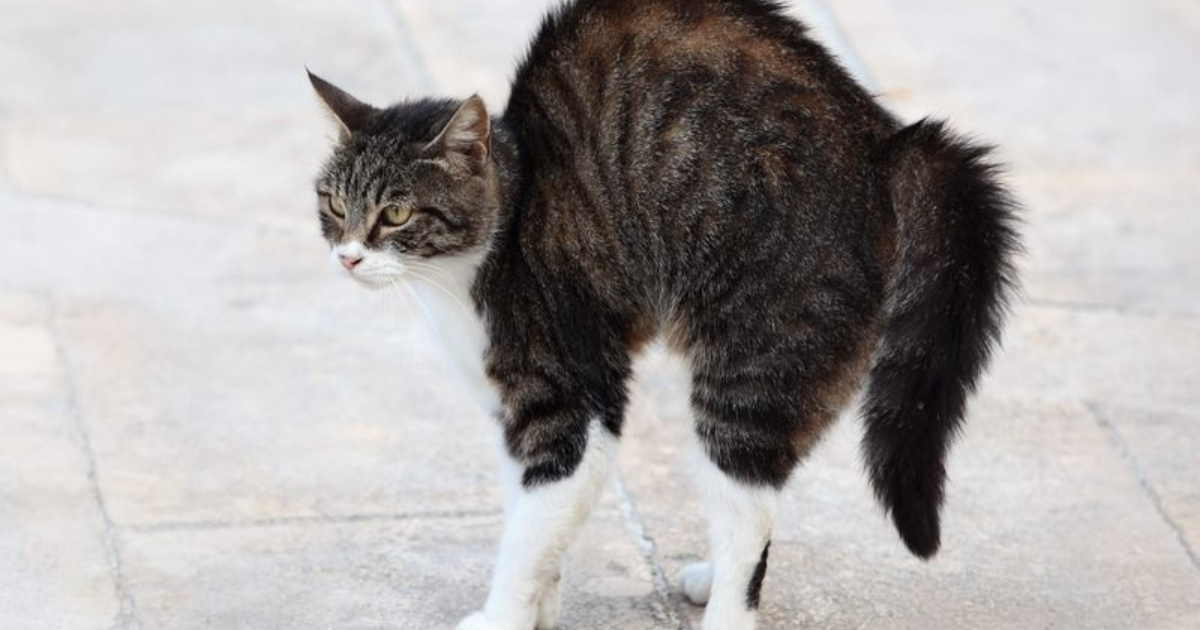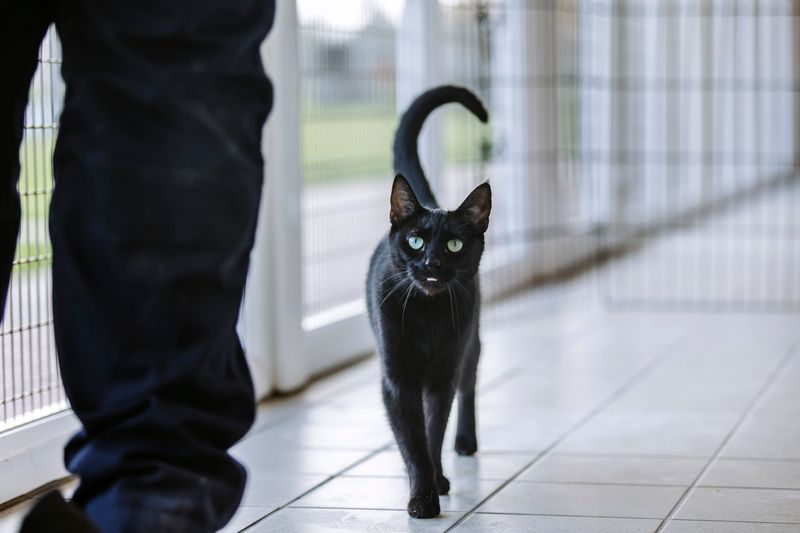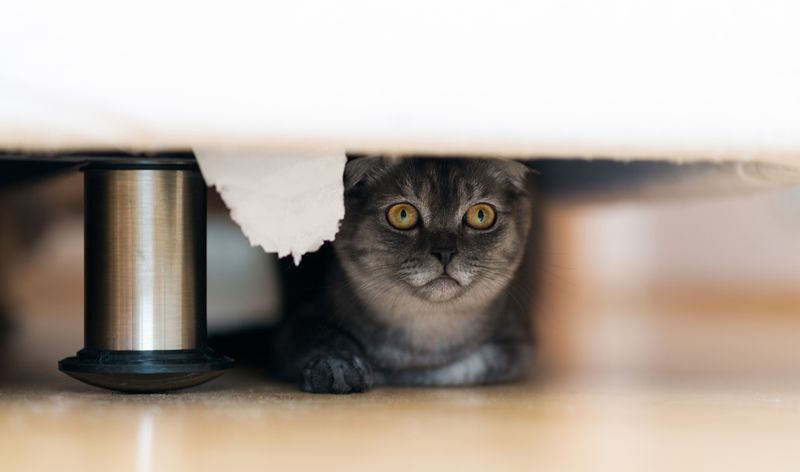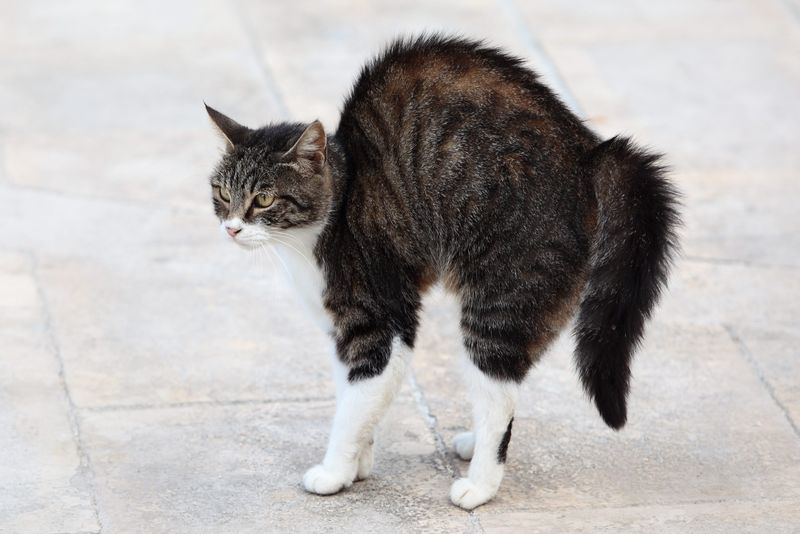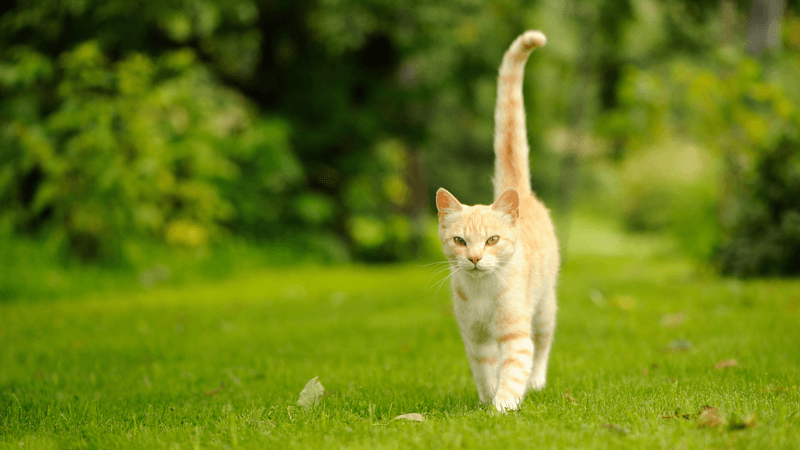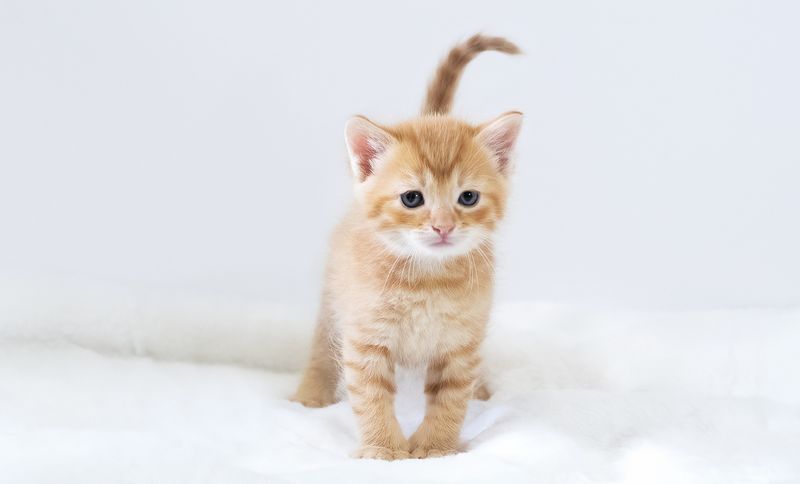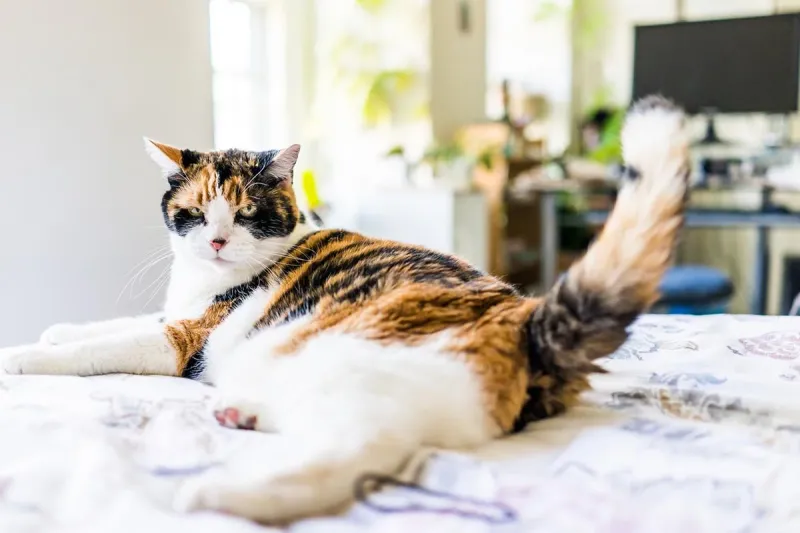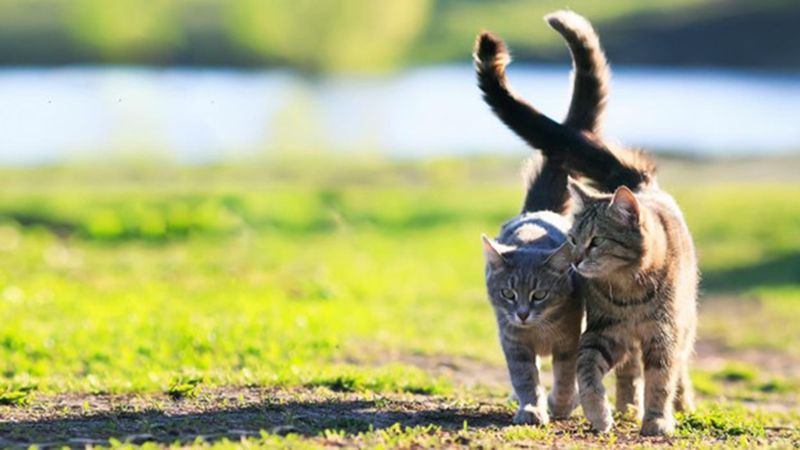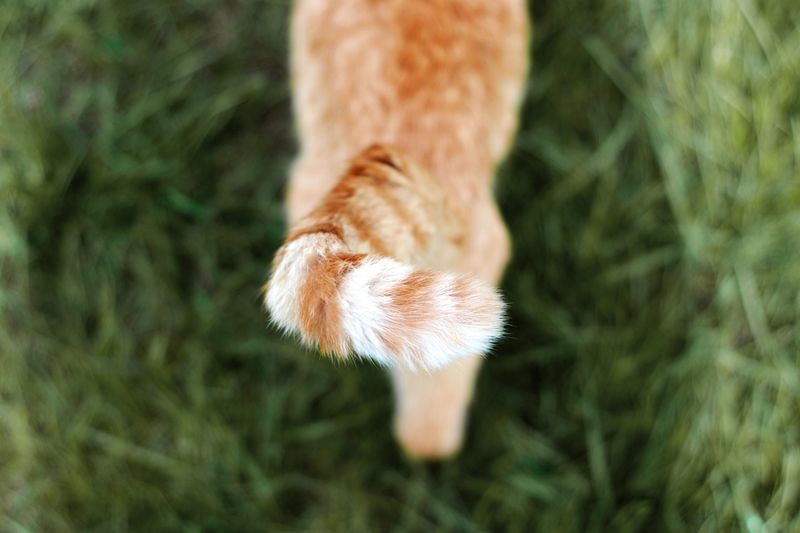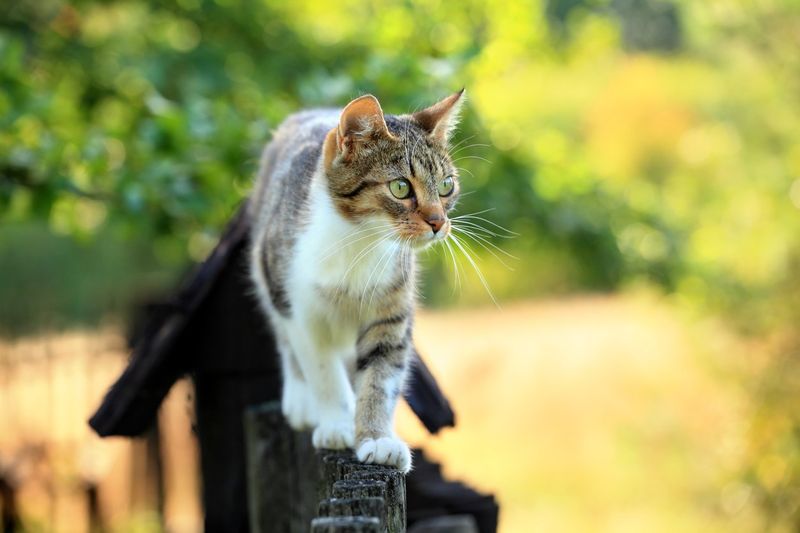📖 Table of Content:
Cats are known for their mysterious behaviors and subtle ways of communicating, and their tails are one of the most expressive parts of their body.
From flicks and swishes to curls and poofs, a cat’s tail can reveal a lot about their mood, intentions, and even health.
Understanding these tail positions can help you decode your feline friend’s feelings and respond to their needs more effectively. Whether your cat’s tail is standing tall or tucked away, each position tells a unique story.
Join us as we dive into the 9 most common cat tail positions, explain what they mean, and provide insights to strengthen your bond with your furry companion.
1. Tail Held High
A tail held high is a sign of confidence and contentment. When your cat struts around with its tail in the air, it’s displaying a positive mood, often indicating that it’s feeling secure in its environment. This posture can also be a greeting, showing friendliness toward people or other animals.
In multi-cat households, a tail held high can convey acceptance or dominance, depending on the context. It’s akin to a handshake, establishing presence and approachability.
If you notice your cat’s tail quivering while elevated, it’s a sign of excitement or anticipation, possibly because it expects a treat or a play session.
For cat owners, recognizing this tail position is key to understanding when your pet is feeling open to interaction. Responding with affection or attention can strengthen your bond, reinforcing the trust your cat has in you.
2. Tail Tucked Under Body
Tail Tucked Under Body
When a cat tucks its tail tightly under its body, it’s typically a sign of fear or submission. This behavior is common in situations where the cat feels threatened or anxious, such as during a visit to the vet or when meeting new animals.
The tucked tail symbolizes a protective measure, as if the cat is trying to shield itself from perceived danger.
This tail posture can also indicate discomfort or stress. In multi-pet environments, a cat might tuck its tail when confronted with a more dominant animal, conveying appeasement. Observing this sign allows owners to assess potentially distressing situations for their pet.
Addressing the root cause of the anxiety, whether it’s environmental changes or social interactions, can help alleviate the stress. Providing a safe, quiet space or using calming aids can assist in reducing your cat’s fear and boosting its confidence.
3. Puffed-Up Tail
A puffed-up tail is a classic indicator of a startled or frightened cat. This reaction is a defensive mechanism, making the cat appear larger to deter potential threats. Cats often puff up their tails when surprised by loud noises, sudden movements, or unfamiliar animals.
In multi-cat households, a puffed-up tail can also signal a readiness for aggression if a territorial dispute arises. It’s crucial for cat owners to recognize this sign and provide a calming environment to diffuse tension.
Offering reassurance through gentle petting or a soothing voice can help calm a startled cat. Ensuring there’s a clear escape route can prevent escalation, allowing the cat to retreat and regain composure. Understanding this tail signal can prevent conflicts and maintain harmony.
4. Tail Whipping
Tail whipping, where the cat’s tail moves side-to-side rapidly, is often a sign of agitation or irritation. This movement indicates that the cat is feeling bothered, whether by something in its environment or due to overstimulation.
Owners may observe this behavior when the cat is unamused with prolonged petting or after hearing disruptive noises.
If the tail whipping is accompanied by narrowed eyes or an arched back, it’s a clear signal to give the cat some space. Ignoring these cues might lead to more aggressive behaviors, such as hissing or swatting.
Respecting this tail movement by pausing any interaction allows the cat to calm down. Providing a quiet environment and avoiding further disturbance can help the cat relax. Recognizing tail whipping is essential for maintaining a peaceful coexistence with your feline companion.
5. Tail Quivering
A quivering tail is a delightful sight, often signaling excitement or anticipation. Cats may exhibit this behavior when their favorite person comes home, or when they’re about to receive a tasty treat. The quivering is a sign of happiness and eagerness, showing that the cat is in a positive emotional state.
It’s important for cat owners to recognize this joyous tail movement and respond with affection or treats, reinforcing the positive experience for the cat. This acknowledgment strengthens the bond between pet and owner.
However, if the quivering occurs in conjunction with other stress signals, such as flattened ears or dilated pupils, it could indicate underlying anxiety.
Observing the whole body language is crucial for accurate interpretation. Celebrating the quivering tail in happy contexts enriches the cat’s interactions and fosters a loving environment.
6. Tail Wagging
Unlike dogs, a wagging tail in cats is not always a sign of happiness. Instead, it often denotes indecision or curiosity. Cats may wag their tails when they’re pondering their next move, such as whether to engage with a toy or explore a new area.
This wagging can be observed during playtime or when the cat is confronted with an intriguing object.
A slow, gentle wag might suggest the cat is relaxed yet attentive, taking in its surroundings with interest. Conversely, a more vigorous wag can be a precursor to pouncing or playful behavior.
For cat owners, recognizing tail wagging as a cue for curiosity helps in providing stimulating environments that cater to the cat’s exploratory nature. Encouraging play and offering interactive toys can satisfy the cat’s inquisitive spirit, contributing to its mental and physical well-being.
7. Tail Wrapped Around Another Cat
When cats wrap their tails around each other, it’s a sign of friendship and affection. This behavior mirrors human hugs and indicates a strong bond between the cats. It’s often seen in multi-cat households where the animals have established trust and companionship.
Tail wrapping can occur during resting periods or while the cats sit side by side, enjoying each other’s presence. This gesture underscores a harmonious relationship, showcasing mutual comfort and acceptance.
Observing this affectionate sign can reassure cat owners that their pets are getting along well.
Encouraging such interactions through shared spaces and communal activities can further strengthen the cats’ bond. Recognizing tail wrapping as a sign of friendship allows owners to better understand their pets’ social dynamics.
8. Tail Flicking
Tail flicking, characterized by short, quick movements, typically signifies focus or mild irritation. Cats often flick their tails while observing something interesting outside a window or when they’re fixated on a toy. This movement reflects an internal debate or concentration.
If the tail flicking becomes more pronounced, it might suggest growing annoyance, especially if the cat is being disturbed. Recognizing this early sign allows owners to prevent potential grievances and maintain a peaceful environment.
Engaging the cat with toys or activities that hold its attention can channel this focused energy positively. Understanding tail flicking helps cat owners gauge their pet’s mood and needs, ultimately enhancing the cat’s overall well-being and satisfaction.
9. Tail Drooping
A drooping tail generally indicates lethargy or illness in cats. When a cat’s tail hangs low, it may reflect feelings of sadness or unwellness. This position is often accompanied by a lack of energy and enthusiasm.
In some cases, a drooping tail can also be a sign of pain or discomfort, prompting a need for veterinary attention. It’s crucial for cat owners to monitor this behavior closely, especially if it persists for an extended period.
Providing a warm, comfortable resting place and ensuring the cat is hydrated and well-nourished can help address some of these issues. However, if the drooping tail continues, seeking professional advice is essential.
Recognizing this tail position alerts owners to potential health concerns, allowing for timely intervention and care.
